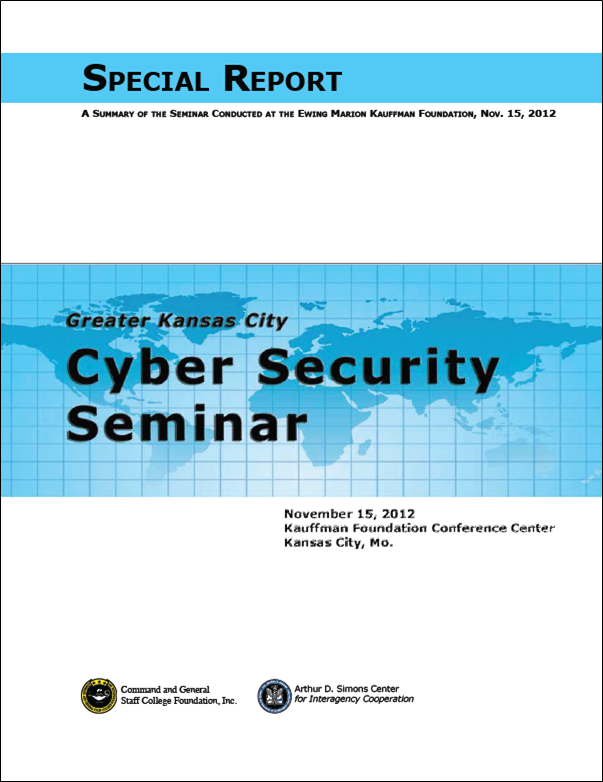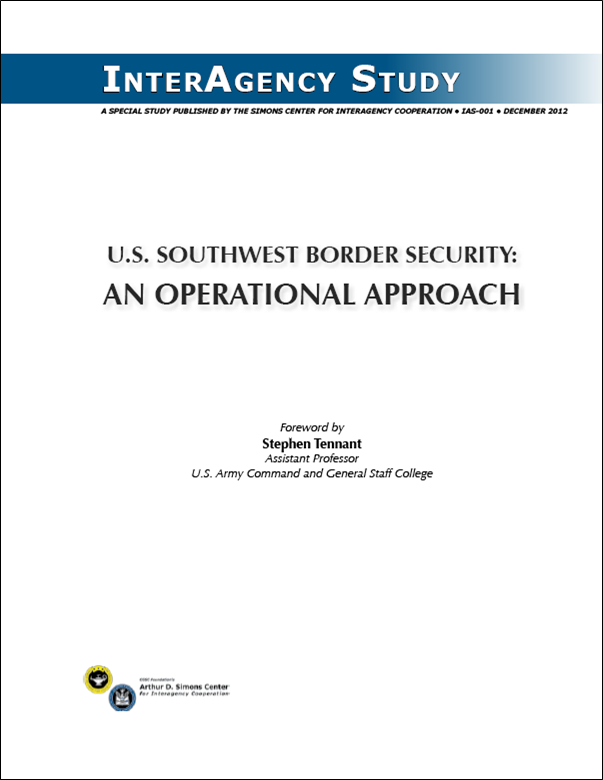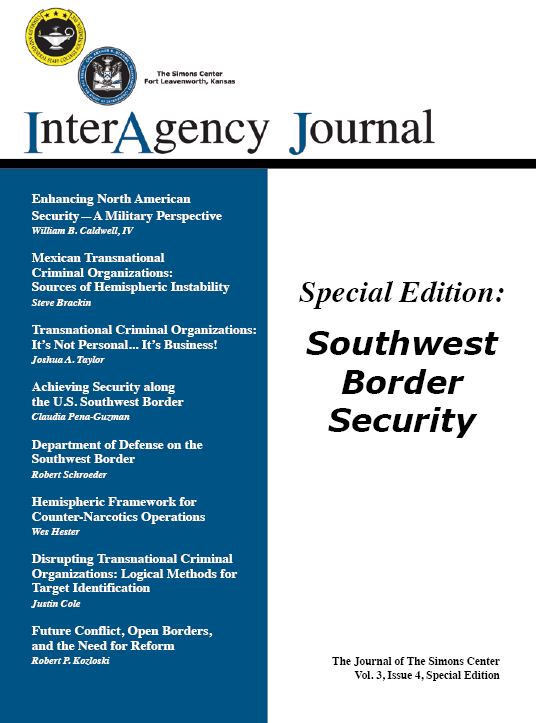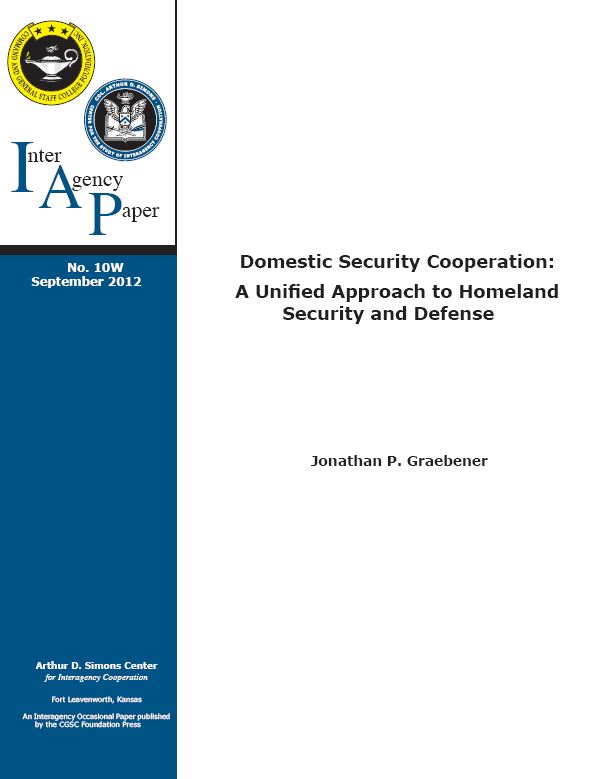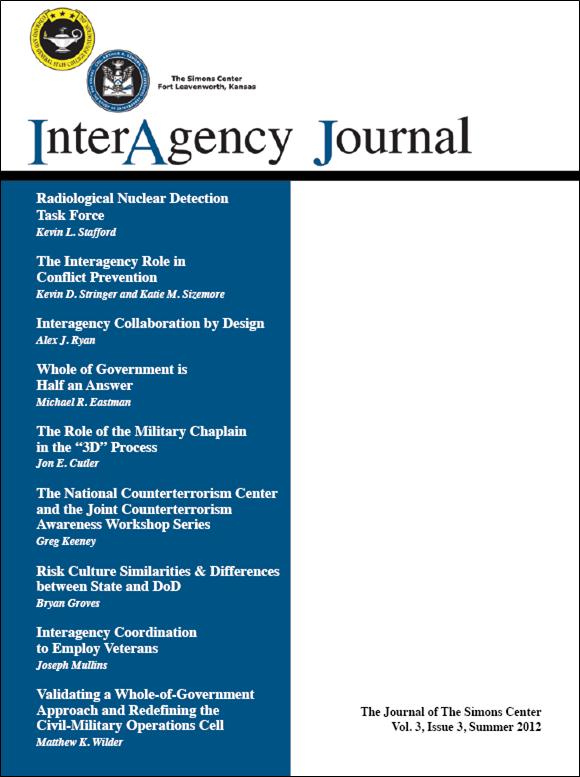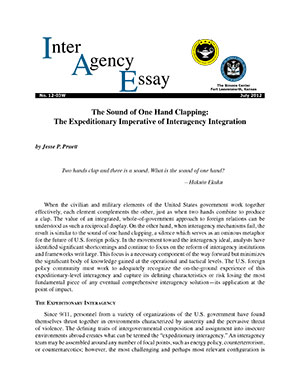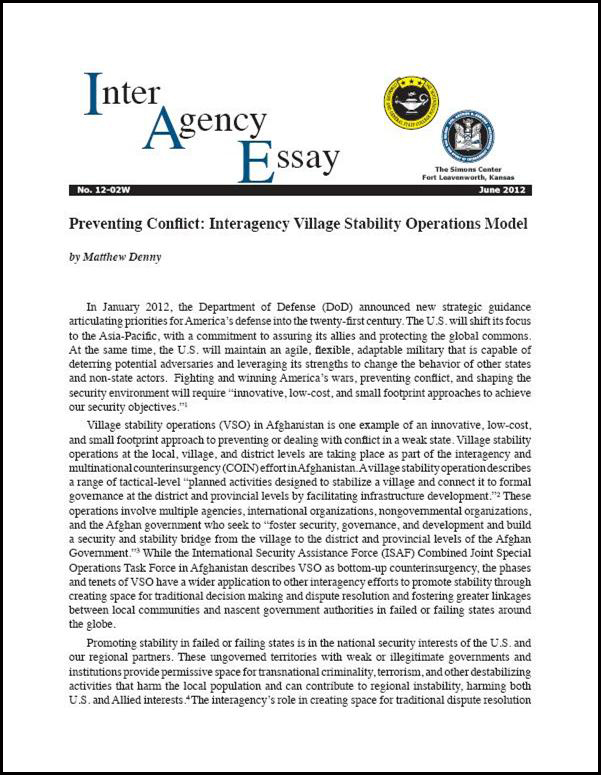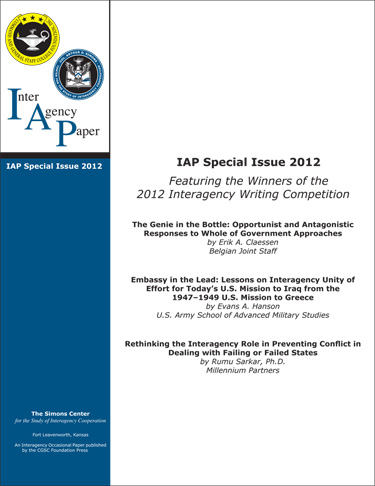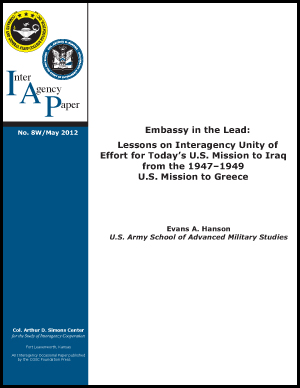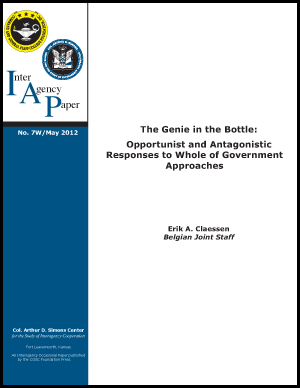Publications
The Simons Center Publications
The Simons Center is committed to the development of military leaders with interagency operational skills and an interagency body of knowledge that facilitates broader and more effective cooperation and policy implementation within the United States government. As part of this mission, the Simons Center produces a number of publications that cover a broad range of interagency topics including national security; leader development; ethics; counterterrorism; stabilization and reconstruction operations; homeland defense and security; and disaster preparation and response. The Simons Center’s main publications include the:
The InterAgency Journal (IAJ) is a peer-reviewed, national security studies journal, published semiannually. Journal articles are approximately 3,000 to 5,000 words in length.
The InterAgency Essay (IAE) series consists of individually published essays of 1,000 and 3,000 words in length that are not peer-reviewed.
The InterAgency Paper (IAP) series includes in-depth studies, individually published, of approximately 5,000 to 10,000 words in length. IAP submissions are peer-reviewed.
The InterAgency Studies (IAS) series consist if sponsored projects of the Simons Center on a particular issue and may include multiple articles or essays.
Other publications include special reports, web-exclusive publications and books. See the Simons Center Publication Descriptions for further information on each of our publication types.
Individuals wishing to receive hard copies of Simons Center’s InterAgency Journal should contact editor@thesimonscenter.org. To receive updates about the release of new Simons Center publications, Simons Center news and events, and other interagency news and events via email, please sign up for email alerts – an email alert sign up is available on most every page of the Simons Center website.
The Simons Center is always looking for authors to contribute manuscripts reflecting their experience, study, and insight. Please go to our Contribute Content page for complete submission instructions.
Disclaimer: The works published by the Simons Center represent the opinions of the authors and do not reflect the official views of any United States government agency, the Department of Defense, the Department of the Army, the U.S. Army Command and General Staff College, the Command and General Staff College Foundation, the Simons Center, or any other non-government, private, public, or international organization.
The Greater Kansas City Cyber Security Seminar explored threats to U.S. cyber security, and discussed the myriad challenges faced across business and government information system platforms. This report provides a summary of the remarks from the event’s speakers and panelists…
... Read MoreThis study focuses on security at the U.S. Southwest border, and begins with a broad view of border region issues before narrowing its focus to security and how DoD can support a whole of government approach to border security. The authors examined the border region from various perspectives and applied selected tools of anthropology, physical and cultural geography, and military doctrine.
... Read MoreThis special edition of the InterAgency Journal focuses on Southwest Border Security…
... Read MoreUsing a capabilities-based assessment model as a guide, this paper examines the current operational capabilities of Immigration and Customs Enforcement, Customs and Border Protection, and NORTHCOM. The analysis highlights the capabilities required to combat current and future threats along the southwest border and identifies the gaps between existing and required capabilities.
... Read MoreInside this issue: Radiological Nuclear Detection Task Force, by Kevin L. Stafford; The Interagency Role in Conflict Prevention, by Kevin D. Stringer and Katie M. Sizemore; Interagency Collaboration by Design, by Alex J. Ryan …and much more.
... Read MoreThis essay discusses the need for U.S. government agencies to develop a ground-level understanding and execution in its expeditionary interagency professionals in order to synchronize broader institutional reforms. The author posits that the teams that have defined the expeditionary interagency since 9/11…
... Read MoreThis essay explores village stability operations (VSO) in Afghanistan as an “innovative, low-cost, and small footprint” method of achieving U.S. security objectives…
... Read MoreContingency operations are currently taking place in dangerous, unpredictable, and highly volatile environments where local government institutions have weakened or collapsed. In view of these conflict situations, it is recognized that the initial task of the military (whether national or multilateral) is to provide security.
... Read MoreOn December 15, 2011, the U.S. mission in Iraq became State Department-led, and all U.S. military activities became the responsibility of the U.S. Embassy’s Office of Security Cooperation–Iraq (OSC-I). There are few, if any, well-known examples of such a transition in U.S. history that might inform civilian and military leaders in Baghdad.
... Read MoreWhen intervening forces create a safe and secure environment to implement a whole of government approach, they simultaneously create opportunities for hitherto unnoticed and powerless opponents to do the same—and sometimes more successfully.
... Read More"*" indicates required fields
